Contents
Blackcurrant is the most common berry grown in temperate climates. It is planted in almost every summer cottage or garden plot. And of course, all gardeners are trying to choose the best blackcurrant varieties for planting, which give a bountiful harvest and at the same time the fruits have an excellent taste. Taking into account these needs, in recent years, breeders have bred and presented new varieties of useful berries, which are distinguished by very tasty and large fruits.
Classification of varieties
There are a lot of blackcurrant species (about 150), and even more hybrid varieties, and in order to somehow streamline this long list, the culture should be classified into the following categories:
- by maturity (early, mid-season, late, very late);
- according to the size of the fruit (large-fruited, medium and small-fruited);
- on resistance to diseases and external factors (resistant, moderately resistant and slightly resistant);
- by yield (high-yielding, medium-yielding, and low-yielding varieties);
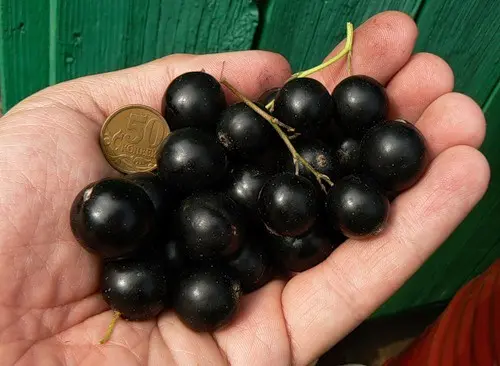
- according to the sugar content or sweetness of berries (sour, moderately sour and sweet);
- according to the method of pollination.
Best
It is clear that it is rather difficult to choose the best varieties of blackcurrant among all the variety. It should be noted that berries of any variety contain approximately the same composition of vitamins, microelements, and have excellent therapeutic and prophylactic properties. The only difference in composition is the level of glucose: the sweeter the berries, the more glucose they contain.
As for the main characteristics, each gardener should choose a variety of currants based on their own preferences and climatic conditions. Climate and soil are of decisive importance – for example, out of almost two hundred varieties of this crop, only 50 are successfully grown in the climate of the central strip and the Moscow region. The vitality of the culture is also important: resistance to diseases, cold resistance.
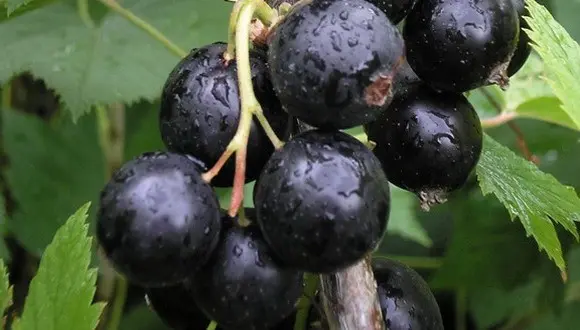
Obviously, early ripening crops with large (3-6 grams) and sweet berries are of the greatest interest to gardeners. In addition, recently new high-yielding varieties have been bred that do not require cross-pollination, as well as hybrids, for example, currants crossed with gooseberries – a high-vitamin product that looks like blackcurrant, but much tastier and healthier.
According to gardeners, the best for growing in the climate of the Moscow region are such early and large-fruited varieties as Black Boomer, Zhemchuzhina. Legend is a very high-yielding early variety with sweet, albeit medium-sized berries (3-4 g). There are also interesting dessert varieties with a high content of glucose and pectins: Lydia, Temptation, Izolda, Minusinskaya sweet, Solomon, Kalinovka, Princess, Charm. It should be noted that in recent years Ukrainian breeders have also bred new varieties that have become very popular in Ukraine, and are also suitable for cultivation in the latitudes of the Moscow region: Sofievskaya, Vernissage, Suite Kyiv, Cossack, Amethyst, Chereshnevaya, Krasa Lvova.
Video “Tips for the care and cultivation of currants”
Demonstrative video with useful recommendations for gardeners on the care and cultivation of currants.
Large-fruited
Varieties with large berries include the following:
- Vigorous – a high-yielding crop with very large (the size of a quail egg) and sweet fruits, with proper care it gives up to 10 kg of berries from a bush, and the branches bend under the weight of the clusters;
- Ariadna is a high-yielding mid-early variety with sweet and sour large fruits, the culture is very resistant to cold and disease, planted in a sunny area can produce 7-8 kg of yield per bush, according to gardeners it grows well in the soils of the Moscow region;
- Gross – mid-season variety resistant to diseases and frost, high yield, large, fragrant berries, with smooth skin, arranged 8-10 pieces per brush;
- Belarusian sweet – a crop resistant to cold and diseases with good taste of berries, suitable for industrial cultivation in the non-chernozem zone of most regions of Our Country, including the Moscow region;
- Venus is an early winter-hardy self-fertile variety, high yield, smooth, large-sized fruits (5-6 g), with a high sugar content;
- Dobrynya – a high-yielding disease-resistant crop with smooth large (5-7 g) berries, is the most successful development of domestic breeders, suitable for growing in different regions of Our Country: in the middle lane, southern regions and the climate of the Moscow region;
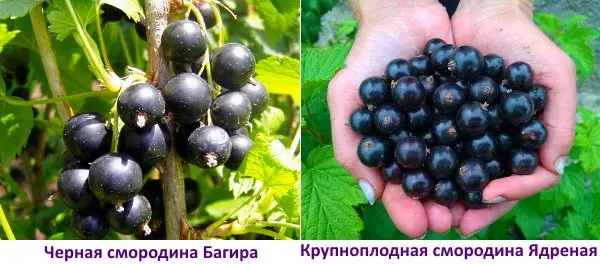
- Gulliver is a mid-season high-yielding crop of domestic selection with large berries of 10-17 pieces on each brush, resistant to disease and cold;
- Exotica is an early self-fertile variety with good winter hardiness, large fruits sometimes exceed cherries in size, and dense smooth skin allows for long storage and transportation of berries;
- Cossack – mid-season high-yielding variety, undemanding to soil, climate, disease resistant, fruit weight is 5-7 g;
- Effect – high-yielding and fairly hardy mid-ripening crop with large sweet and sour berries, resistant to disease, cold and drought.
Of course, these are far from all varieties of currants with large berries. This list may include several dozen more, but it is fair to say that some of the large-fruited varieties do not have high palatability, while others are simply not suitable for growing in the climate of the middle and central strip.
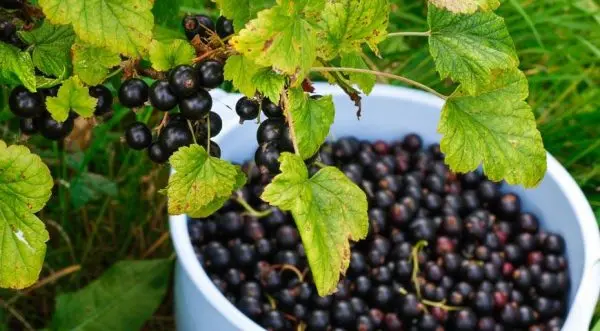
super sweet
If currants are grown not for industrial purposes, but for themselves and their families, it makes sense to choose not only large-fruited, but also sweet varieties. Sweet berries are those in which the sugar content exceeds 10% – these are the fruits that are ideal for making jam and eating as a dessert. As a result of many years of research, the following varieties of currants fell under the description of “dessert”:
- Excellent student (sugar content 11,1%) – mid-season and frost-resistant culture, fruits are medium, very fragrant, 4-5 kg can be harvested from one bush;
- Nina (sugar 11%) – mid-season variety of selection of Altai biologists, medium-sized fruits, very juicy and fragrant;
- Bagheera (sugar 10,8%) is a winter-hardy mid-season crop, the berries are large and very fragrant, the yield is high – up to 5 kg per bush;
- Triton (sugar 10,6%) is a mid-season self-fertile variety, resistant to frost and disease, valued for its high and stable yield, is universal for growing in soils of the middle, central strip, including the Moscow region;
- Green haze (10,1%) is a high-yielding dessert crop bred at VNIIS named after V.I. Michurin, has high disease resistance, is not demanding on the soil, therefore it is included in the State Register and recommended for cultivation in most regions of Our Country;
- Selechenskaya (10,01%) is an early ripe crop with large (4-5 g), fragrant berries, resistant to cold and diseases, and is universal for growing in many regions.
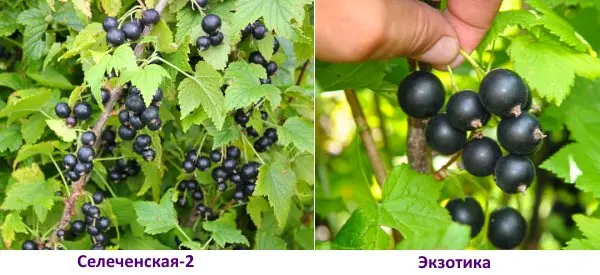
This rating was compiled by specialists of the All- Research Institute of Fruit Crops Breeding. However, there are other data, according to which the list of sweet varieties is much wider. So more than 10% of sugar contains the following varieties: Ladushka (10,5%), Labile (10,4%), Memory Bordova and Vernissage (10,3%), Gorgeous and Vladimirskaya (10,2%), Memory and Black stork (10,1%).
Early
Those who wish to enjoy healthy berries from the beginning of June, when some types of currants are just blooming, should pay attention to early ripening varieties:
- Exotic is one of the earliest crops, the description of which is presented above, the ripening time is the beginning of June, it is resistant to cold, it easily survives spring frosts, regular watering is necessary to obtain a plentiful early harvest;
- Currant – early ripening currant (mid-June) with large and tasty fruits, self-fertile, resistant to cold, but susceptible to damage by bud mites;
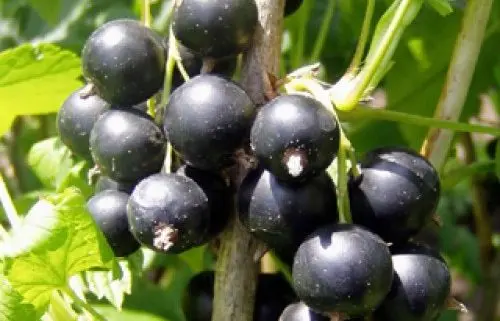
- Vigorous – a very cold-resistant and high-yielding crop, the description of which was also presented above, fruit maturity occurs in mid-June, gives a bountiful harvest, but is somewhat susceptible to fungal diseases, which often affects the quality of the crop;
- The Little Prince is a cold-resistant currant of early ripening (mid-June), the fruits are small (2-3 g), quite tasty (sugar content 10,7%), disease resistant, but can be affected by bud mites;
- Overture – currant of a very early ripening period (early June), dense clusters, consisting of 10-15 small fruits (up to 2 g), resistant to cold and disease, bred at VNIIR them. Vavilov as a universal highly productive crop suitable for growing in the non-chernozem zone;
- Nara – the time of full ripening comes in mid-June, resistant to cold, drought, fungal diseases, mites, medium-sized fruits (2-3 g), juicy with a sweet and sour taste.
Whichever currant you choose, it is important to know that maximum productivity is maintained for the first 7-10 years. Then the fruits become small, and the bush itself gradually degenerates. In order to receive an abundant harvest of a useful product every year, it is necessary to regularly cut branches that are more than three years old. Thus, the shoots will be regularly updated and give a high yield.
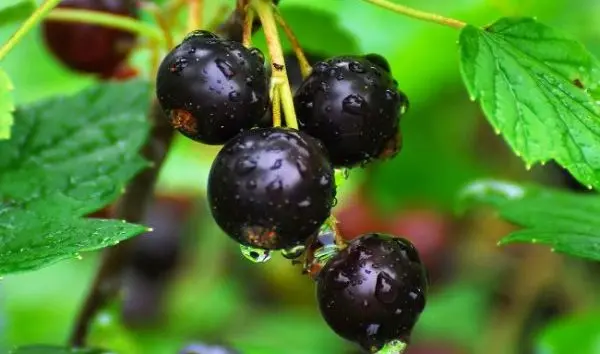
Video “Useful properties of berries”
Demonstrative video with a list of useful properties for human health.
Author: Svetlana Galitsina
Loading…









